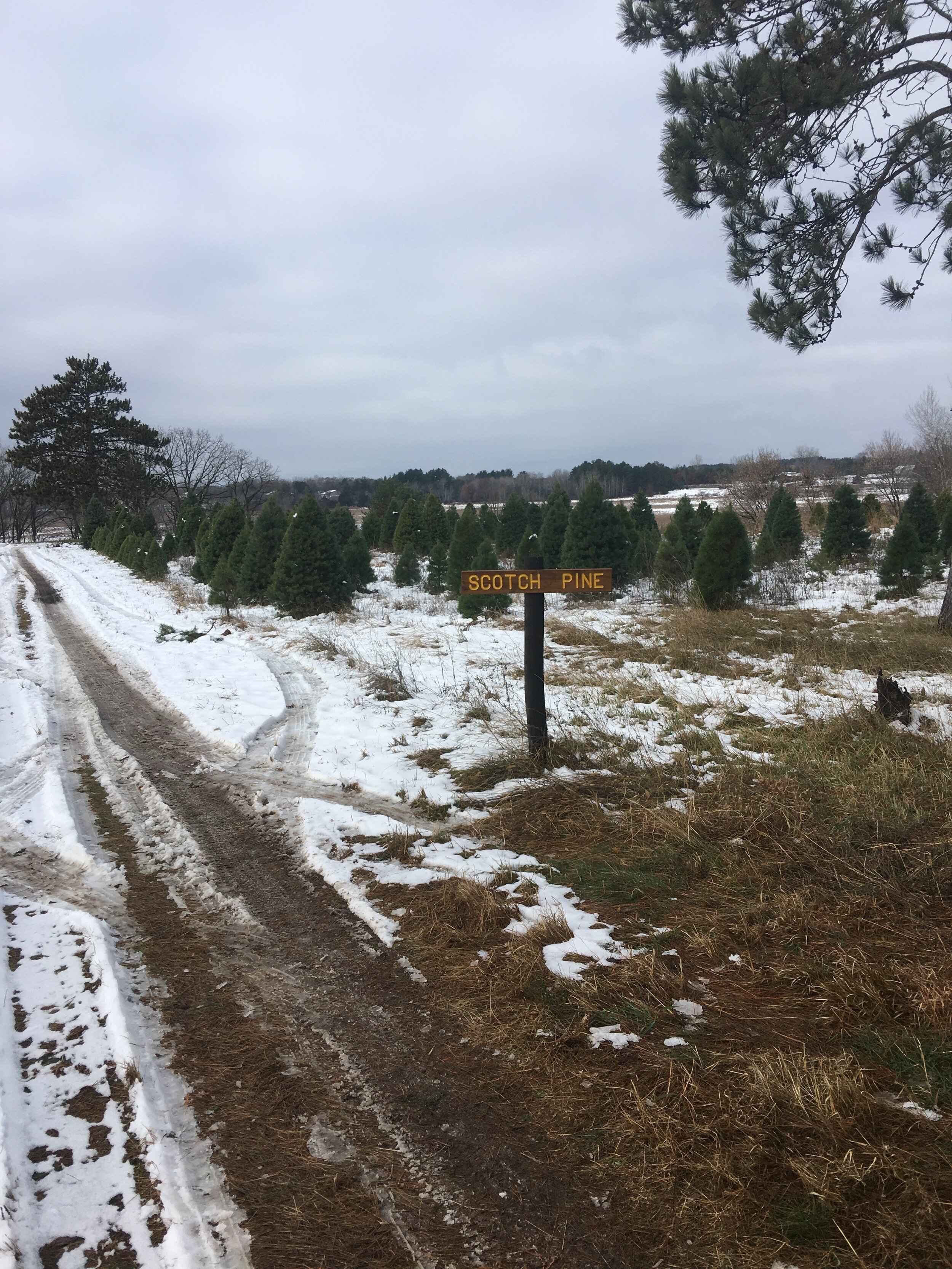The Sustainable Christmas Tree
Last weekend some friends sent snaps of them cutting down their Christmas tree from a nearby tree farm. It brought back memories of the one and only time I convinced my husband we should cut our own Christmas tree down. In the years that followed I went to the closest hardware store to buy a pre-cut tree and starting a few years ago, I head to the basement to pull out the fake tree. The switch to a fake tree was purely a cost and tidiness decision as the pine needles were still showing showing up in July. Another friend, knowing my penchant for sustainability, thought I would have a problem with them cutting a tree down for Christmas, but to be honest I did not have a good answer for whether it was bad for the environment or not.
Looking into options for Christmas trees, Green America lists the following:
Buy a potted tree. Choose a tree that is suitable to your climate, use small lights to avoid damaging the branches, and when the season is over, move it to the garage to transition the tree into colder weather before planting it outside. If you are like me with limited yard space for a tree, you could always check with your local parks department to see about donating the tree.
Make your own tree out of items around the house. They suggest stacking books into a tree shape and hanging ornaments on the corner, finding a large stick and making what sounds like a Charlie Brown tree, or just hanging ornaments on a board on the wall.
Find a locally owned, organic tree farm. These local farms often plant two trees for every one they cut and plant in areas that are less suitable to agriculture. Plus you are supporting a local business owner and not a large corporation.
Buy an artificial tree. This is unfortunately the least favorable option since they are made with plastic, aluminum, and steel that is not recyclable. In addition, the plastic which makes up about two-thirds of the material was made using fossil fuels and was transported from China expending even more resources.
There’s an even more sustainable version of the local organic tree farm—the coppice tree farm. Coppicing is a method of growing new trees in stumps. These kinds of Christmas tree farms are rare, but those that use this practice avoid intensive land management practices involving removal of the stumps each year and use of fertilizers and insecticides. Coppicing allows the new tree to take advantage of the extensive root system of the old stump and supports biodiversity to better manage climate change.
The debate between real and fake Christmas trees would seem to land on the side of the living tree. The trees are not harvested from old growth forests, they come from intentional tree farms. During the average seven years a Christmas tree is growing, it captures CO2 at a rate of about one ton per acre and produces oxygen. The Carbon Trust found that a real Christmas Tree that is about 6.5 feet tall has a carbon footprint of 16 kg of CO2 if it ends up in the landfill compared to a fake tree which as a carbon footprint of 40 kg. You can further reduce the real trees footprint to under 4 kg of CO2 by recycling it in one of the following ways:
Checking your local Department of Natural Resource (DNR) to see if they accept tree donations to use as fish habitat
Chopping it up to use in your backyard firepit
Checking your local Parks and Recreation Department to see if they collect the trees to use for mulch
The good news if you already have an artificial tree is that the impact if far less if you keep using the tree year after year. The Carbon Trust found that it takes an artificial tree 10 years of use to lower its environmental impact compared to one real tree. Must of us will reuse our Christmas trees for decades, especially since their use for about a month a year keeps them in good shape.
So the quick answer is to choose the tree that makes you happiest, but try to find the more sustainable version. If you want a real tree, seek out organic tree farms, especially those that grow their trees from stumps. At the end of the season, do not throw the tree away, but find a way to recycle it. If you prefer the ease and low maintenance of a fake tree, try to find one that was made in the U.S. and make sure you keep using it for at least 10 years.







